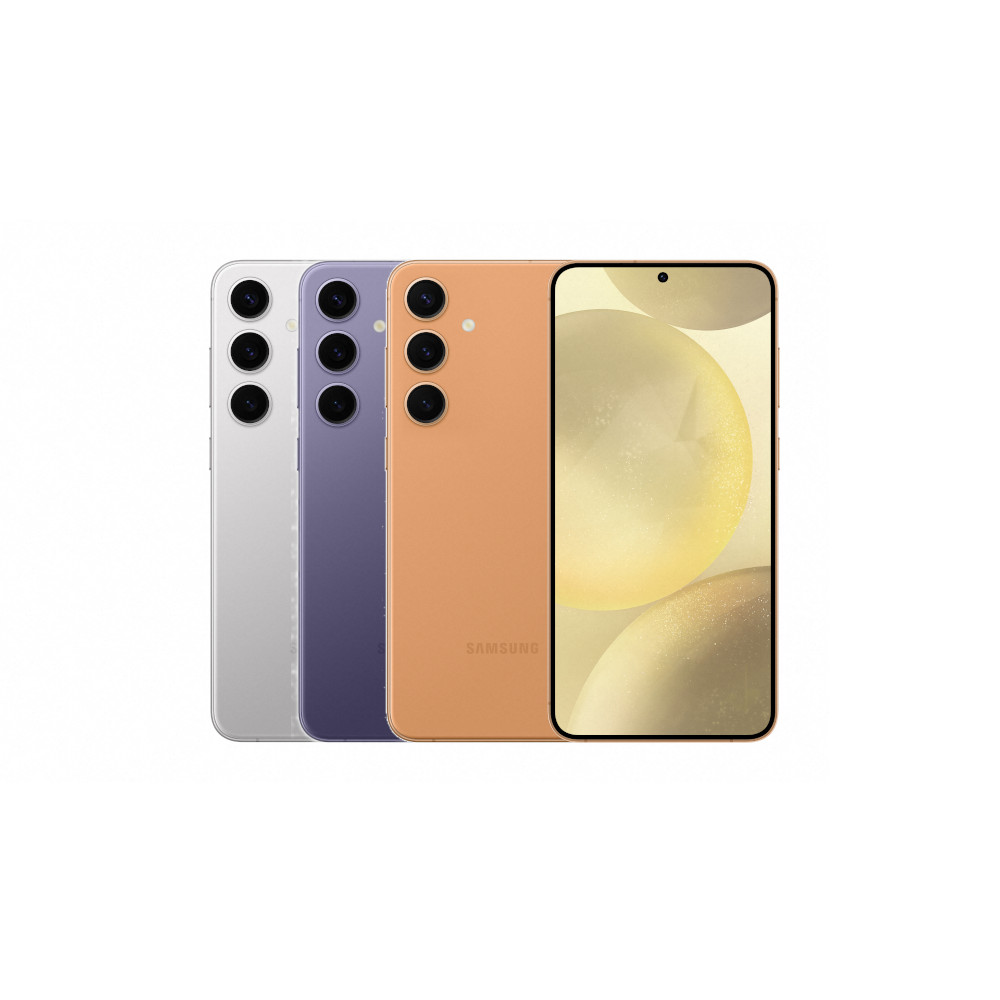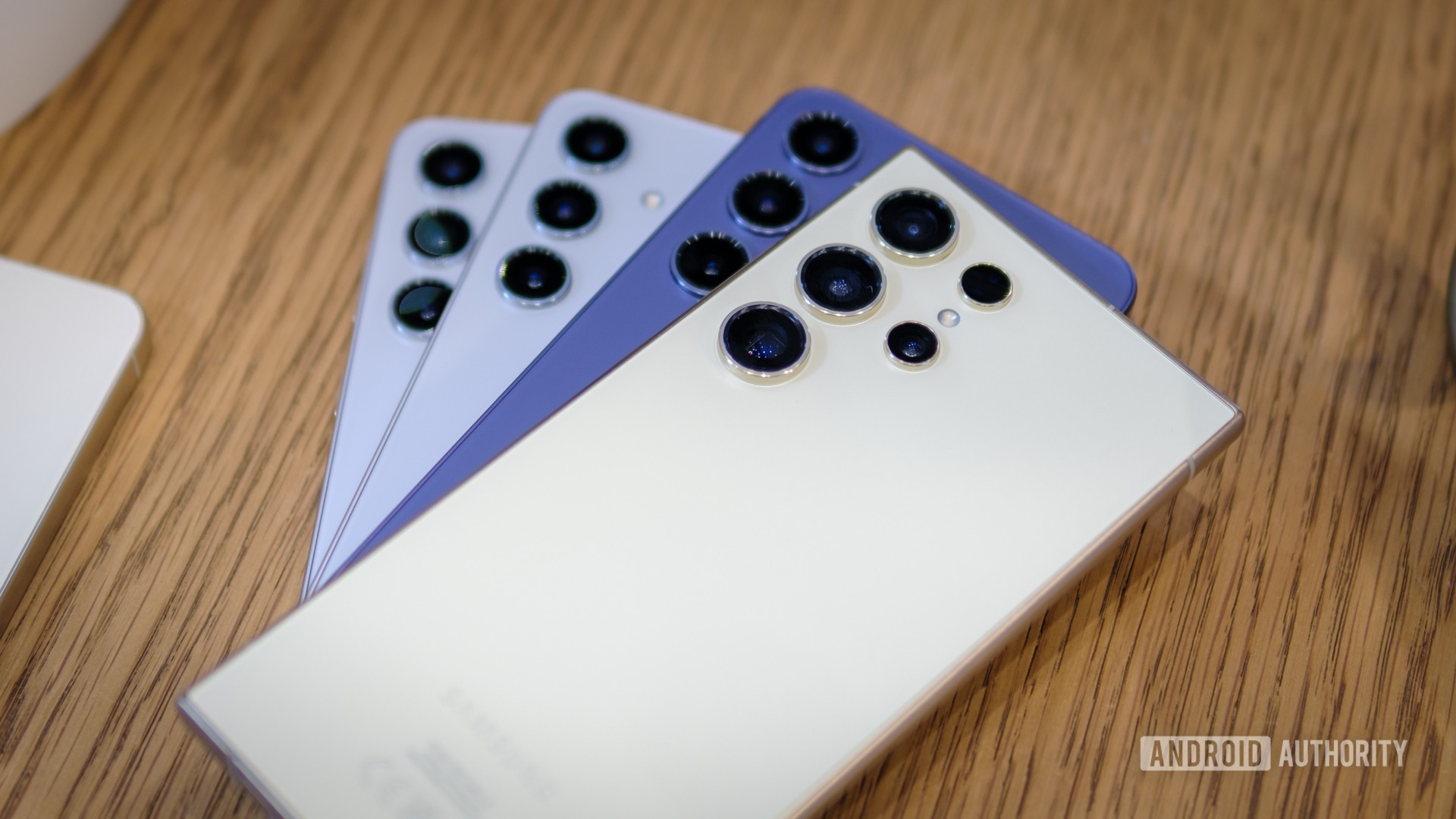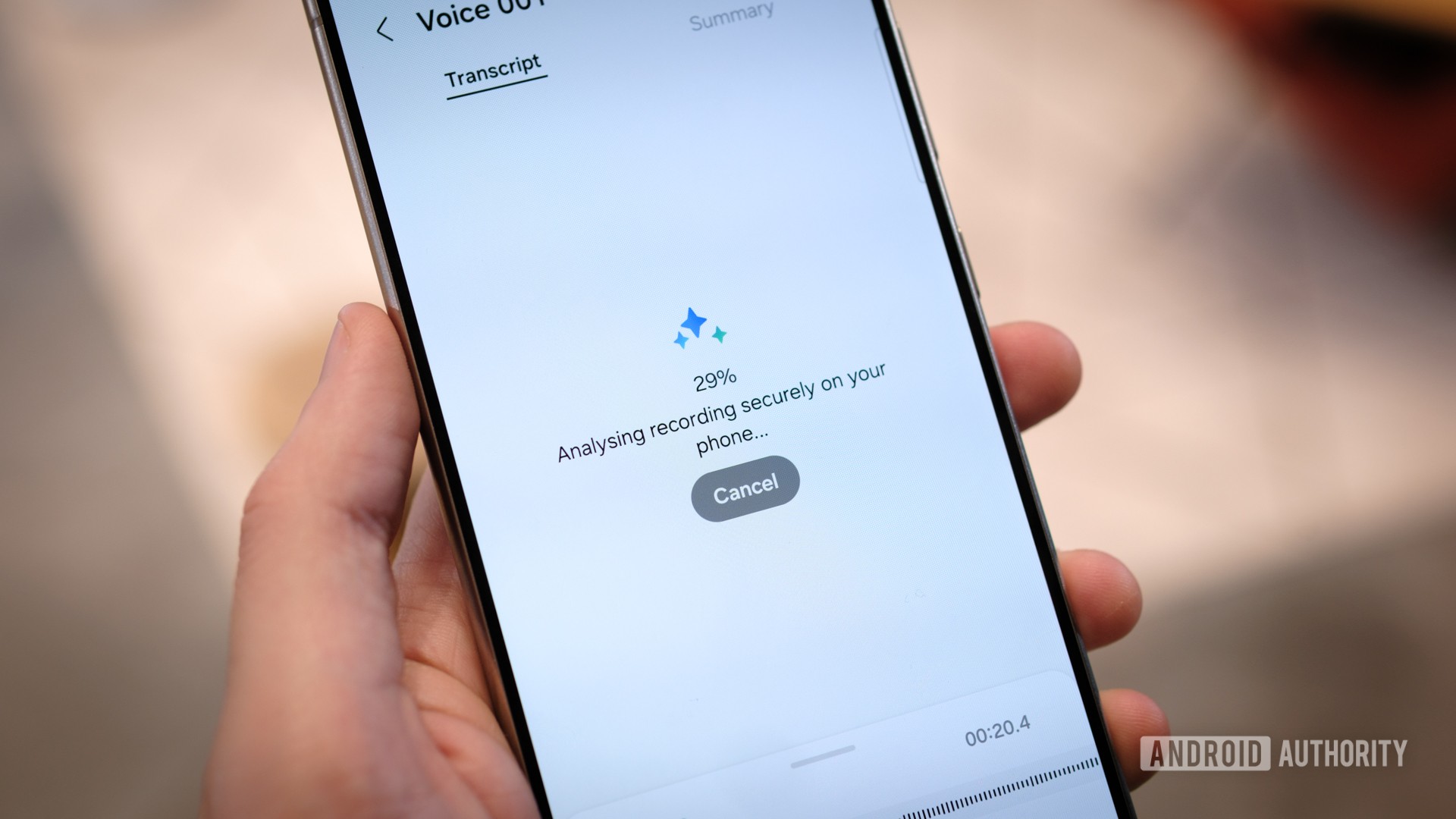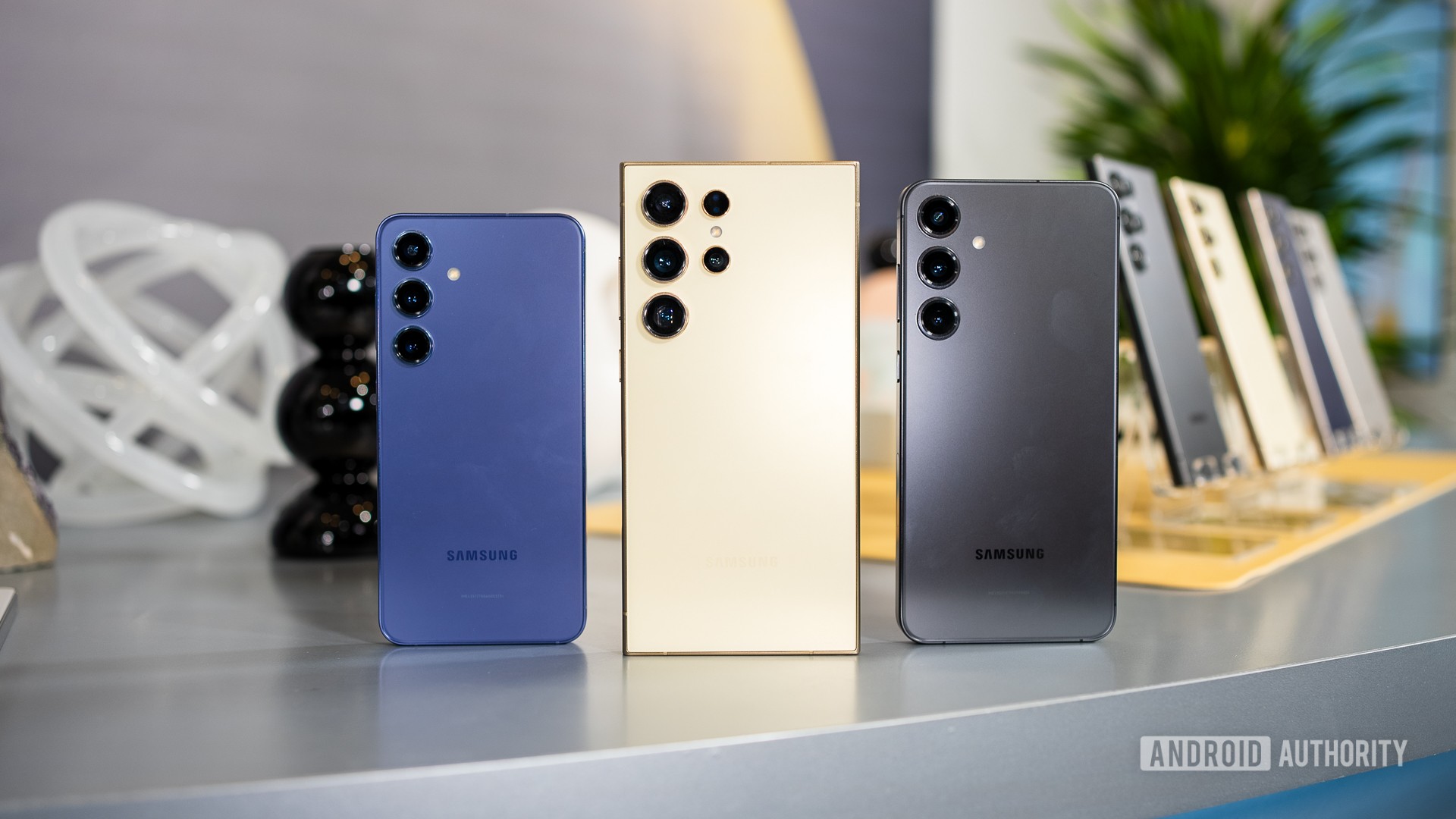This suggests that Qualcomm’s option is the ultra-premium chipset, but does that mean Galaxy S24 and S24 Plus customers using Exynos are missing out? Let’s dive into the Snapdragon 8 Gen 3 vs Exynos 2400 to see what’s different.
Snapdragon 8 Gen 3 vs Exynos 2400 specs
| Snapdragon 8 Gen 3 | Exynos 2400 | |
|---|---|---|
|
CPU Config |
Snapdragon 8 Gen 3
1x 3.3GHz (Cortex-X4) |
Exynos 2400
1x 3.2GHz (Cortex-X4) |
|
GPU |
Snapdragon 8 Gen 3
Adreno |
Exynos 2400
Xclipse 940 |
|
AI |
Snapdragon 8 Gen 3
Hexagon |
Exynos 2400
AI Engine (2x NPU, 2x Shallow NPU) |
|
RAM support |
Snapdragon 8 Gen 3
LPDDR5X |
Exynos 2400
LPDDR5X |
|
Storage support |
Snapdragon 8 Gen 3
UFS4.0 |
Exynos 2400
UFS4.0 |
|
Camera support |
Snapdragon 8 Gen 3
• 200MP single shot |
Exynos 2400
• 320MP single shot |
|
Video capture |
Snapdragon 8 Gen 3
8K @ 30fps |
Exynos 2400
8K @ 30fps |
|
4G/5G Modem |
Snapdragon 8 Gen 3
X75 LTE/5G (integrated) |
Exynos 2400
Exynos 5300 |
|
Other networking |
Snapdragon 8 Gen 3
Bluetooth 5.4 |
Exynos 2400
Bluetooth 5.3 |
|
Location |
Snapdragon 8 Gen 3
Galileo, Beidou, NavIC, GPS, GLONASS, QZSS |
Exynos 2400
Galileo, Beidou, GPS, GLONASS |
|
Process |
Snapdragon 8 Gen 3
TSMC 4nm (N4P) |
Exynos 2400
Samsung 4nm (LPP+) |

Samsung Galaxy S24 Plus
Big bright display
Snapdragon 8 Gen 3 for Galaxy
Thin bezels

Samsung Galaxy S24 Ultra
200MP camera
ProVisual Engine
Up to 1TB of storage
New AI tools
Galaxy S24 processor differences explained

Robert Triggs / Android Authority
Right off the bat, the CPU setup is quite different between the two — the Snapdragon 8 Gen 3 has an octa-core (1+4+3) setup, while the Exynos 2400 has a whopping ten cores (1+5+4). There are similarities; the cores are based on the latest Arm cores, encompassing a powerhouse Cortex-X4, mid-core A720s, and power-efficient Cortex-A520s. The two chips also split their middle-core Cortex-A720 configurations into two clock speed groups, presumably to better balance efficiency.
Speaking of clock speeds, Qualcomm offers higher performance across each of its cores, and the difference is particularly noticeable with the little A520 cores. While we’ll have to wait for benchmarks, this suggests the Snapdragon 8 Gen 3 should have a very slight lead in single-core performance, but 100MHz won’t produce a major performance discrepancy in apps or games. Multi-core performance is harder to judge pre-benchmarking; Exynos’ core count advantage should pull ahead, but Snapdragon’s higher clock speeds could close that gap.
With different CPU counts, GPUs, and NPUs, Exynos and Snapdragon don’t have a lot in common.
Graphics is an even bigger area of difference, stacking Qualcomm’s in-house Adreno GPU against AMD’s RDNA3 architecture in the form of the Xclipse 940. Both sport ray-tracing hardware, with the Snapdragon 8 Gen 3 claiming a 50% performance boost over its predecessor. 2022’s Exynos 2200 was one of the first ray-tracing capable mobile GPUs, so we have high expectations from its successor. Unfortunately, Samsung hasn’t indicated how much faster the new GPU is, save for “significant performance improvements.”
On the plus side, the Xclipse 940 supports AMD’s popular FidelityFX Super Resolution AI upscaling technologies to output higher resolutions with minimal performance impact. The Snapdragon 8 Gen 3 sports similar tech in the form of Snapdragon Game Super Resolution, but AMD’s option is already widely supported in the PC gaming space. Both GPUs also support global illumination, so there’s solid feature parity. We’ll have to see about real-game performance.

Robert Triggs / Android Authority
When it comes to AI, Samsung is claiming significant performance gains with the Exynos 2400 when compared to the Exynos 2200. A 14.7x boost in AI performance is a huge number, and reports point to a similar 44TOPS or performance to the Snapdragon 8 Gen 3 Hexagon NPU’s 45TOPS, and Samsung told Android Authority that we can expect similar results. We don’t know whether the Exynos NPU supports compressed INT4 models, and Samsung hasn’t provided token-per-second statistics for running large language models — the 8 Gen 3 can handle 10 billion parameter models running at almost 15 tokens per second. But given offline Galaxy AI features run on both Snapdragon and Exynos versions of the Galaxy S24, the two seem compatible enough for Samsung’s current AI needs.
Turning to networking, you’ll find sub-6GHz and mmWave connections supported on both chipsets, though the Exynos chip takes a theoretical peak download speed of 12Gbps versus Qualcomm’s 10Gbps on mmWave. Still, real-world speeds are more likely to be limited by your network than the modem. Qualcomm takes an edge with Wi-Fi 7 support from its FastConnect 7800 add-on, which Exynos doesn’t support on-chip. This is reflected in the fact that the Galaxy S24 and S24 Plus cap out at Wi-Fi 6E while the Ultra has Wi-Fi 7.
Finally, these two packages are wrapped up in different processing packages. Qualcomm’s Snapdragon 8 Gen 3 is manufactured on TSMC’s 4nm process, while the Exynos 2400 is built at Samsung Foundries on its rival 4nm LPP+ process. This could result in performance and energy efficiency differences, but we’ll have to test the two chips to find out.
Does it matter if my Galaxy S24 has Exynos or Snapdragon?

Lanh Nguyen / Android Authority
The short answer is not really. Samsung ensures that customers receive the same features whether they can buy the Exynos or Snapdragon versions of the Galaxy S24 and S24 Plus. Whether that’s the latest Galaxy AI tools or feature parity when it comes to Bluetooth and Wi-Fi options. Plus, you still receive the same display, charging, and other key specs. There’s not a lot most customers can do about it anyway. Only the US, China, and South Korea will see Snapdragon throughout the line-up, and we’d hesitate to suggest importing a phone just for the different chip.
We won’t know the longer answer to this question until we’ve had a longer opportunity to compare the chipsets and handsets side-by-side. We might see some performance differences in the highest-end games, slightly different levels of battery efficiency, and possible variations in networking performance, as has been the case in previous Exynos vs Snapdragon comparisons. Gamers and high-performance users, for example, may want to wait for the full picture before deciding on a specific Galaxy S24 model.
So it’s once again possible that some consumers may have a marginally more performant or efficient version of the same phone. Remember though, the Samsung Galaxy S24 Ultra packs a Snapdragon 8 Gen 3 for Galaxy processor in every region, so we’d suggest global customers pick up that model if they really want Qualcomm’s latest chip.



